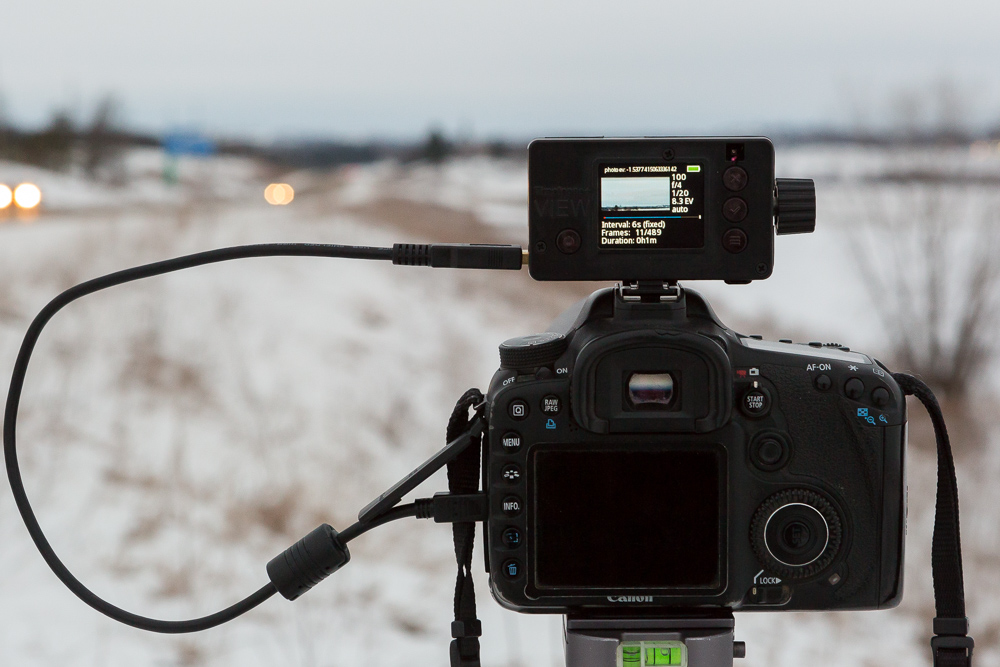Revisiting my time-lapse workflow
As technology and time-lapse specific equipment evolves, thought I would update my workflow and processes on how to achieve some reasonable time-lapse astro footage. My earlier process is here and still contains some relevant and handy information if interested http://www.leswillphoto.com/blog//gear-and-process-review-starscapes-and-timlapses
Some updates and changes to what I am using is mainly around the equipment, but also software.
New Gear
As mentioned previously, its very easy to spend big on astro and time-lapse gear, but a couple of well targeted purchases can make all the difference.
One of these I believe is the timelapse+ View intervalometer. Elijah the designer and producer is absolutely committed to the cause of making a device that enables professional and technically advanced time-lapse capture with an easy to use interface and process. This device allows for all sorts of automation of the time-lapse capturing, including the Holy Grail - the transition between night and day or vice versa. I highly recommend this gadget - it does require some tinkering and trial and error to get the best out of it, and the interface can be a little buggy sometimes, but overall it delivers fantastic results.
I have also upgraded my motion capabilities from the Syrp range to the emotimo Spectrum. This is a top end device for both movie and still motion, and not cheap. But the smoothness of transitions it provides, and the flexibility that I am now learning for detailed and intricate motion is fantastic.
Lastly, lenses are always developing, and I am now using a Zeiss 15mm ultra wide lens. Fantastic performance and capability but again, not on the cheap side.
I also now use an external lithium battery source to power everything such that i can do full 12 to 18 hour captures. The YETI400 from GoalZero is awesome. Still use the humble and non enviro friendly plastic garbage bag as overall protector of all the gear once out in the field, and I have invested in the Kendricks lens warmers to beat that pesky dew point which is needed here in the southern hemisphere as the galactic core and milky way is most visible in our cold winter months !
Motion time-lapse of Milky Way and Galactic Core
The Process of Capture
So I still use the apps PhotoPills (excellent and now i understand some of its functions even better, can in advance see where the milky way will be and its movements on any day/night) and the excellent iOS only Scope Nights for weather conditions.
I use the Canon 6D or 5D for my capture, with the Zeiss 15mm lens attached to the emotimo spectrum ST4 if i am doing movement. I now also attach the View to the hot shoe of my camera and use that for camera adjustments over the course of the night.
Settings for the View vary based on the night conditions, but in general I use :
2.5 sec frequency for day
45 sec frequency for night
max shutter of 20 sec
f1.8 or 2.0
manual focussed to infinity
Auto variable ramping
ISO 5000
All noise reduction and stability turned OFF
White balance at 3850
RAW capture
Enjoy the night shoot - i don’t have to be around my camera all night but i still pop down at various intervals to check all is going to plan and check the exposures to ensure that I am exposed to the right as much as possible without blowing any bright spots. This type of capture gets the most detail and allows for excellent milky way post processing. Dont go too high on ISO but these days 5000 or 6400 is all good. Remember the 500 rule re shutter time - 500 over your lens length is the max eg for my Zeiss 15mm, maximum would be 500/15 = 33.33 seconds. To be safe so i don’t get any star trailing and nice crisp stars and nebula, I stay at 20 or 25 seconds maximum exposure time.
The Process of putting it together
LRTimelapse needs to be your friend for excellent time-lapse processing. Gunthers software product is number one as far as i am concerned and that’s where my time-lapse processing starts and finishes. Combined with Lightroom this is all you need to output high quality 4K and beyond time-lapse sequences.
Hope some of these process insights help and enjoy capturing your skies where ever you may be!
